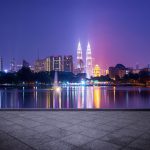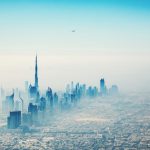
Most of Caracas, Venezuela’s capital city, is less than 15 miles from the Caribbean Sea, though you’d never know it. The coastal mountain range along the city’s northern edge separates it from the ocean, though the altitude provides other benefits. Caracas is free of the marshy, swampy terrain and thick forests that dominate much of the lowlands, or the extreme electrical storms (and pirates!) that are a feature of the country’s coastline. The generally mild climate has led to the city’s nickname, La Ciudad de la Eterna Primavera, or the city of eternal spring. The idyllic name and the dense concentration of high rises and skyscrapers in the city’s financial distract—the latter a relic of when the Venezuelan economy was riding high on petroleum exports—belie the reality of a Caracas that is consistently named as one of the most (if not the most) violent cities on earth. The devolution of Venezuela’s political scene has laid bare an economy and populace reliant on a steady stream of petroleum exports and state management of the petro dollars that came in. Beginning with the leadership of former President Hugo Chavez, Venezuela embarked on a series of socialist-tinged nationalist policies that pushed out Western oil majors and began a domino effect that has resulted in the near-collapse of the Venezuelan state in less than two decades. But Venezuela’s problems do not all stem from mismanagement or a tough geography. Despite fiery rhetoric to the contrary, nearly all Venezuela’s oil exports wind up in the United States — but the shale revolution has reduced the Americans’ need for anything Venezuela can provide, dictating a crash in Venezuelan income and fortunes.
For more on the how, why, and future of Venezuela’s oil sector see Chapter 9 of The Accidental Superpower and Chapter 13 of The Absent Superpower.



